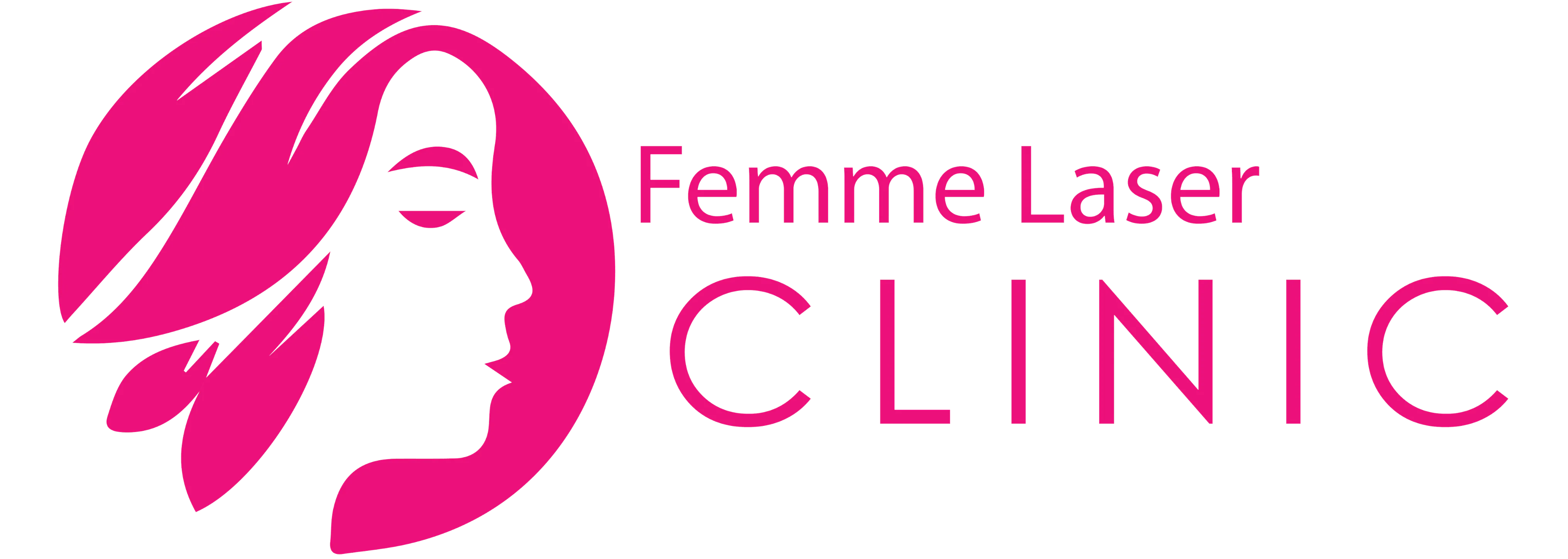Laser hair removal is a popular cosmetic procedure that uses laser technology to remove unwanted body hair. It provides a long-lasting solution to hair removal, making it a popular choice for many individuals. Before considering this treatment, it is essential to understand its basics, types, and the number of treatments required for different areas, such …
Laser hair removal is a popular cosmetic procedure that uses laser technology to remove unwanted body hair. It provides a long-lasting solution to hair removal, making it a popular choice for many individuals.
Before considering this treatment, it is essential to understand its basics, types, and the number of treatments required for different areas, such as the bikini area.
Laser hair removal works by targeting the hair follicles with a concentrated beam of light, destroying them and preventing future hair growth. The various types of lasers used for this procedure include Alexandrite, Diode, Nd:YAG, and Intense Pulsed Light (IPL).
The number of treatments required for laser hair removal in the bikini area varies for each individual. Factors such as hair color, thickness, and skin tone can affect the number of treatments needed. On average, most individuals require 6-8 treatments for the bikini area.
While laser hair removal is generally a safe procedure, there can be some potential side effects. These include temporary skin irritation, changes in skin color, blistering or scarring, and eye injury. It is essential to choose a reputable and experienced provider to minimize these risks.
Before undergoing laser hair removal, it is essential to prepare for the treatment. This involves avoiding sun exposure, shaving the treatment area, and avoiding certain medications that can increase sensitivity to light. During the treatment, the patient may experience some discomfort, but it is generally well-tolerated. After the treatment, the treated area may be slightly red and swollen, but this should subside within a few hours.
Proper aftercare is crucial for the success of the treatment. This includes avoiding sun exposure, exfoliating the treated area, and moisturizing regularly. It is also necessary to follow any additional instructions provided by the provider.
In conclusion, laser hair removal is an effective and long-lasting solution for removing unwanted hair in the bikini area. With proper preparation, treatment, and aftercare, individuals can achieve the desired results and enjoy smoother, hair-free skin.
What Is Laser Hair Removal?
Laser hair removal is a cosmetic procedure that utilizes concentrated light to eliminate unwanted hair. This procedure involves a laser that emits a light that is absorbed by the pigment (melanin) in the hair. The light energy is then converted to heat, damaging the hair follicles and preventing future hair growth. This method provides a long-term solution for hair reduction, but multiple sessions are typically required for optimal results.
The concept of using lasers for hair removal was first introduced in the mid-1960s, but it wasn’t until the 1990s that advancements in technology and techniques made laser hair removal a popular and effective cosmetic treatment.
Table of Contents
ToggleWhat Are The Different Types Of Laser Hair Removal?
Laser hair removal is a popular method for achieving smooth, hair-free skin. However, not all laser treatments are created equal. In this section, we will discuss the different types of lasers used in hair removal and their unique characteristics. From the speedy and effective Alexandrite laser to the versatile and safe IPL, we will explore the pros and cons of each type to help you determine which one is best for your bikini area.
1. Alexandrite Laser
- Consultation: Schedule a consultation with a certified dermatologist to determine if the 1. Alexandrite laser is suitable for your skin and hair type.
- Preparation: Follow the pre-treatment guidelines provided by the dermatologist, such as avoiding sun exposure and refraining from using certain skincare products.
- Treatment: Arrive for the scheduled appointment and follow the technician’s instructions during the procedure.
- Aftercare: Adhere to the post-treatment care advice, including moisturizing the treated area and avoiding sun exposure.
Suggestions: Always prioritize safety and effectiveness by seeking treatment from experienced professionals in reputable clinics.
2. Diode Laser
- Diode Laser: The diode laser is a suitable option for individuals with light to medium skin tones. The procedure involves:
- Preparing the skin by shaving the treatment area and thoroughly cleansing it.
- Applying a cooling gel to the surface of the skin to protect it from the heat of the laser.
- Using the diode laser to target the hair follicles and emit concentrated light to inhibit future hair growth.
- After the treatment, it is important to avoid sun exposure and apply soothing creams to the treated area.
This laser is so advanced, it could probably remove hair from a bald man’s head in one session.
3. Nd:YAG Laser
- Consultation: Meet with a certified technician to discuss your skin type, hair color, and medical history.
- Preparing the Skin: Shave the treatment area, remove any makeup or lotions, and wear protective eyewear.
- Nd:YAG Laser Treatment: The Nd:YAG laser emits a highly concentrated beam of light that is absorbed by the pigment in the hair follicles.
- Post-Treatment Care: Apply soothing gels or creams, avoid sun exposure, and follow any additional instructions from your technician.
Get ready to say goodbye to unwanted hair and hello to a smooth bikini area with the help of IPL laser hair removal.
4. IPL
- Consultation: Schedule a consultation with a certified technician to assess your skin type and hair color before undergoing IPL treatment.
- Avoid sun exposure: Refrain from tanning or excessive sun exposure prior to your IPL treatment.
- Avoid certain medications: Some medications can increase your skin’s sensitivity to light, so it is important to consult with your technician about which medications to avoid.
My friend Laura recently tried IPL treatment and was delighted with the results. She experienced a significant reduction in hair growth after just a few sessions, and the procedure was surprisingly comfortable.
How Does Laser Hair Removal Work?
Laser hair removal targets hair follicles with concentrated light beams, disabling the hair’s ability to grow back. The process involves several steps:
- Consultation to assess skin and hair type.
- Preparation, including shaving the treatment area.
- Application of cooling gel for protection.
- Laser exposure to target hair follicles.
- Post-treatment care to soothe the skin.
Fact: Laser hair removal works best on individuals with light skin and dark hair due to the contrast in color, allowing the laser to effectively focus on the hair follicles.
Source: Mayo Clinic
How Many Laser Hair Removal Treatments Are Needed For Bikini Area?
When it comes to laser hair removal for the bikini area, one of the most common questions is: How many treatments are needed? The answer is not a simple one, as there are various factors that can affect the number of treatments required for optimal results. In this section, we will discuss these factors and how they can impact the number of laser hair removal sessions needed. Additionally, we will also explore the average number of treatments typically recommended for the bikini area.
1. Factors Affecting Number Of Treatments
- Factors Affecting Number of Treatments:
- Hormones: Hormonal changes can play a role in hair growth, potentially increasing the number of sessions needed for desired results.
- Skin Color and Hair Type: Dark, coarse hair on light skin responds best to treatment, while lighter hair may require more sessions.
- Area of Treatment: The size and location of the treatment area can also impact the number of sessions required.
Get ready for multiple visits to the beach, because removing unwanted hair down there takes more than one round of laser hair removal.
2. Average Number Of Treatments For Bikini Area
- On average, it takes 6-8 treatments for laser hair removal on the bikini area.
- It is recommended to schedule each session 4-6 weeks apart.
- The number of sessions needed may vary depending on factors such as hair color, thickness, and skin tone.
Pro-tip: It is best to consult with a qualified dermatologist to determine the appropriate treatment plan for your specific skin and hair type.
Source: Dr Divya Sharma
Just a few zaps and you’ll be smooth as a baby’s bottom, but watch out for temporary skin irritation, changes in skin color, blistering or scarring, and eye injury – sounds like a day at the beach!
What Are The Side Effects Of Laser Hair Removal?
Laser hair removal is a popular method for achieving long-lasting hair reduction in the bikini area. However, like any cosmetic procedure, there are potential side effects that should be considered. In this section, we will discuss the possible side effects of laser hair removal for the bikini area. From temporary skin irritation to more serious risks like blistering or scarring, it’s important to understand the potential consequences before undergoing treatment. So, let’s dive into the possible side effects and how to minimize their occurrence.
1. Temporary Skin Irritation
- To soothe the treated area, apply a cool compress.
- Protect the skin from sun exposure by using sunscreen.
- Avoid using harsh skincare products on the treated area to prevent temporary skin irritation.
- To prevent infection, keep the treated area clean and dry.
Just like a chameleon, laser hair removal can change your skin color – but hopefully not permanently.
2. Changes In Skin Color
- Hyperpigmentation: After laser hair removal, skin may experience temporary darkening, but this is typically temporary.
- Hypopigmentation: Lightening of the skin can occur, especially in individuals with darker skin tones.
- Consult a dermatologist if you notice prolonged or severe changes in skin color.
3. Blistering Or Scarring
- Avoid sun exposure: Shield the treated area from direct sunlight to prevent skin damage and reduce the risk of blistering or scarring.
- Moisturize: Apply gentle moisturizers to keep the skin hydrated and promote healing after the laser treatment.
- Follow post-care instructions: Adhere to the specific guidelines provided by your dermatologist to minimize the chances of blistering or scarring.
It’s essential to closely follow the post-care instructions provided by your dermatologist to minimize the risk of blistering or scarring after undergoing laser hair removal treatments.
Be careful, laser hair removal isn’t worth losing an eye over.
4. Eye Injury
- Wear protective eyewear: Both the patient and the technician should wear appropriate protective eyewear to prevent any potential eye injury from accidental exposure to the laser beam.
- Avoid looking directly at the laser: Patients should be cautioned to avoid looking directly at the laser during the treatment to reduce the risk of eye injury.
- Qualified technician: It is important to have a qualified and experienced technician perform the laser hair removal procedure to minimize the risk of eye injury.
How To Prepare For Laser Hair Removal Treatment?
Before undergoing laser hair removal treatment for your bikini area, it is important to properly prepare yourself for the best results. In this section, we will discuss the necessary steps to take before your treatment. These include avoiding sun exposure, shaving the treatment area, and refraining from certain medications. By following these preparations, you can ensure a successful and effective laser hair removal experience.
1. Avoid Sun Exposure
Ready, set, shave – it’s time for some laser hair removal!
- To protect your skin, be sure to apply a broad-spectrum sunscreen with SPF 30 or higher to all exposed areas.
- Avoid direct sun exposure, especially between 10 a.m. and 4 p.m.
- Wear protective clothing, such as wide-brimmed hats and sunglasses, to further shield yourself from the sun’s harmful rays.
- When spending time outdoors, remember to seek shade to minimize sun exposure.
After diligently following these steps, Sarah was able to fully enjoy her beach vacation without experiencing any adverse effects from sun exposure after her laser hair removal treatment.
2. Shave The Treatment Area
- Before shaving the treatment area, consult with your dermatologist to ensure that it is suitable for your skin type and hair texture.
- To prevent skin irritation and ingrown hairs, use a clean and sharp razor.
- Before your laser hair removal session, make sure to shave the intended treatment area, leaving the hair shaft intact while removing hair above the skin’s surface.
In some cases, dermatologists may suggest alternative hair removal methods for individuals with sensitive skin.
Taking the wrong medication before laser hair removal can leave you feeling hot and bothered in all the wrong places.
3. Avoid Certain Medications
- Avoid taking blood-thinning medications, such as aspirin or ibuprofen, before your laser hair removal treatment as they can increase the risk of bruising and other side effects.
- Refrain from using herbal supplements, like St. John’s Wort, as these can also heighten the chances of having adverse reactions.
- Make sure to discuss all current medications with the laser technician to receive personalized advice on which ones to avoid.
My friend, Sarah, diligently followed the advice to avoid certain medications before her laser hair removal treatment. As a result, she experienced minimal side effects and achieved excellent results, making the process smoother and more effective.
Get ready for some zaps and a smoother bikini area – it’s like a spa day with a futuristic twist.
What To Expect During And After The Treatment?
If you’re considering laser hair removal for your bikini area, it’s important to know what to expect during and after the treatment. Laser hair removal can be an effective and long-lasting solution, but it’s important to understand the process and potential side effects. In this section, we’ll discuss what happens during the treatment, including the sensations you may experience and how long the procedure typically takes. Then, we’ll cover what you can expect after the treatment, including potential redness or irritation and how to care for your skin during the healing process.
1. During The Treatment
- Arrive on time for your appointment.
- Wear appropriate clothing to enable access to the treatment area.
- Follow the technician’s instructions for positioning and staying still during the treatment.
- Wear protective eyewear if required.
2. After The Treatment
- Post-treatment care is crucial for optimal results.
- Avoid sun exposure and apply sunscreen to the treated area.
- Keep the area clean and dry to prevent infections.
- Avoid hot baths, saunas, and rigorous exercise for a few days.
- In case of discomfort or redness, apply soothing creams or aloe vera gel.
Following these steps will help you achieve the best results after the treatment and maintain the health of your skin.
How To Take Care Of The Treated Area After Laser Hair Removal
To properly take care of the treated area after laser hair removal, it is important to follow these steps:
- Avoid sun exposure for 24-48 hours post-treatment.
- Avoid hot showers, saunas, and strenuous exercise for 24-48 hours.
- Moisturize the treated area regularly to soothe any redness or irritation.
- Avoid tight clothing that may cause friction or irritation.
- Apply aloe vera gel to calm any skin sensitivity.
Did you know that following these aftercare tips can greatly reduce the risk of complications after laser hair removal?
Frequently Asked Questions
How many laser hair removal treatments do I need for the bikini area?
The number of treatments needed for bikini laser hair removal varies depending on individual factors such as hair growth rate, skin surface, and hair thickness. Generally, 4 to 10 sessions are recommended for long-term hair reduction, with a 25% reduction after the first treatment. However, some clients may require more or fewer sessions to achieve their desired results.
Is bikini laser hair removal a safe procedure?
Yes, bikini laser hair removal is a safe and effective method for long-term hair reduction. However, it is important to ensure that the procedure is performed by board-certified physicians or trained professionals using up-to-date and safe equipment, such as at Chetco Medical & Aesthetics or Spektrum Laser Spa.
How often should I schedule appointments for bikini laser hair removal?
Treatments for bikini laser hair removal are typically scheduled every 4 to 6 weeks, depending on the hair growth rate in the treated area. This allows enough time for hair to enter the new growth stage and be successfully targeted by the laser. However, this may vary for each individual and their specific hair removal needs.
What should I expect during and after a bikini laser hair removal treatment?
During a bikini laser hair removal treatment, patients may experience some discomfort as the thermal energy from the laser is absorbed by the hair follicles. After the treatment, there may be some redness or skin discoloration, which usually subsides within a few days. It is important to follow aftercare instructions to help the skin heal and achieve the best results.
Can I undergo bikini laser hair removal during my menstrual cycle?
Yes, at Spektrum Laser Spa, patients can receive bikini laser hair removal even during their menstrual cycle. However, hormonal fluctuations during this time may affect the number of sessions needed for optimal results. It is important to consult with a professional to determine the perfect time for treatment.
What are the most common side effects of bikini laser hair removal?
Bikini laser hair removal is a safe procedure, but there are some potential side effects to be aware of. These include slight discomfort during the treatment, redness or skin discoloration afterwards, and potential skin sensitivity. These side effects are usually temporary and can be minimized with proper aftercare and by choosing a reputable and experienced aesthetic center.






